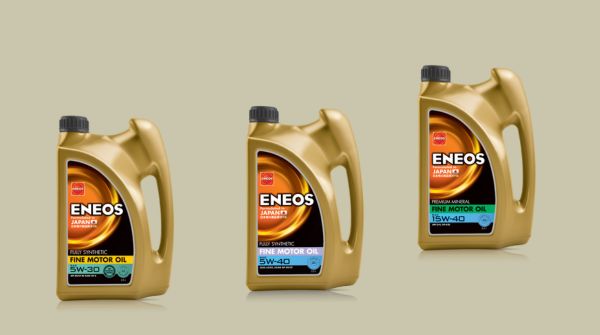Choosing the right engine oil is like making your way down a slippery slope. It is a high-stakes arena where viscosity grades are at war with each other. Numbers, such as 10W-40 or 15W-50, may seem confusing. These are indicators of how your engine oil will perform across temperature extremes. Thus, choosing the right viscosity of engine oil makes a whole lot of difference.
Not sure how to pick the best grade? Let us compare them and see which scores the highest points.
Understanding Engine Oil Viscosity
Engine oil has a diverse flow and shear, depending on the temperature, and its viscosity defines this. The more viscous the oil, the thicker it is, and vice versa.
Ever noticed the two numbers, like 10W-40, on engine oil labels? Do you know what they mean? The 10W stands for how the oil flows in cold weather, with W referring to winter. The number 40 is its thickness while the engine is operating. If this number is low, the oil flows freely, which is a crucial aspect, especially for cold starts. A higher number means it maintains its protective layer better at higher temperatures.
Choosing the Right Engine Oil Viscosity: Key Considerations
Selecting the right viscosity grade for your two and four-wheeler engine oil involves more than understanding the numbers. Follow these tips to make the best choice for your vehicle:
1. Consider the Climate
While choosing the engine oil, don’t just think about the car but also about the weather. Living in a cold region? Your engine needs an oil that can stay fluid at low temperatures. They rush through the engine quickly during a cold start, reducing friction and wear.
If you live in an area that is hot and dusty, opt for a thicker engine oil. This holds its shape better and creates a strong barrier under high heat and pressure conditions.
| Pro Tip The owner’s manual can help you make the right choice. But remember, a little adjustment in viscosity based on the climate can work wonders for your vehicle. |
2. Performance and Protection are Key
Every engine has a unique demand. For example, high-performance turbocharged engines need oils that will not break down under extreme heat and pressure. Hence, opting for a 5W40 engine oil offers faster flow at startup and sheer resistance at full throttle.
Using older engines with more mileage? Go for a thicker oil, like 10W-40 or 15W-50. These offer better protection for worn components and reduce the chances of oil burning. If you have recently bought a new automobile, stick to what the manufacturer recommends. These precision machines are picky about their viscosity partners.
3. Choose Between Conventional and Synthetic Oil
Picked the best viscosity grade? However, you must select the right oil formulation to back it up. Here’s where the debate between conventional and synthetic oil begins. Conventional oils are tried and tested formulas that are suitable for basic engines under average conditions. Synthetic oils, on the other hand, flow better at low temperatures, resist breakdown at high temperatures, and keep the engine clean.
4. Impact on Fuel Economy
Want to save money on your oil? Here’s how viscosity choice can help. Thinner oils reduce engine resistance, which helps boost fuel efficiency. This is the reason why many new cars use them, as they offer the most mileage. But this does not mean that choosing a low viscosity grade equals savings. If your engine needs a thicker oil, using one that is too light can cause poor lubrication and wear over time.
5. Mileage Matters
As the engine of your automobile ages, its internal clearances grow, requiring oil changes. High-mileage oils contain seal conditioners and additives that reduce oil consumption, leaks, and sludge. These have high viscosities, offering better protection for aging components.
Effects of Picking the Wrong Viscosity Grade for Engine Oil
Choosing the wrong oil viscosity may seem minor, but it can seriously impact your engine. Here’s what an incorrect choice looks like:
● Poor Cold Starts
Selected a thicker oil for cold weather? This moves slowly, delaying lubrication during engine startup. The result? This increases engine wear and fuel consumption.
● Overheating Issues
When you select a thin oil in hot regions, it can break down faster, losing its ability to protect the essential parts of the engine. This may lead to overheating or damage.
● Increased Wear and Tear
The wrong viscosity grade leads to improper lubrication, causing parts to grind more. Over time, this can lead to faster ageing of engine components.
● Reduced Fuel Efficiency
Oil that is too thick increases drag, while thin oil reduces protection. Both of these equally harm your engine’s efficiency, resulting in higher bills for repair.
Summing Up
The final verdict? In the epic saga of viscosity wars, there is no universal champion. Rather, it depends on several factors, such as the weather, the manufacturer’s specifications, mileage, etc. Thus, choosing the right engine oil viscosity grade is much more than a technical decision. So, next time you are staring down a shelf full of oil grades, remember that you’re choosing a champion. And these champions, like engines, run best with the right support.











